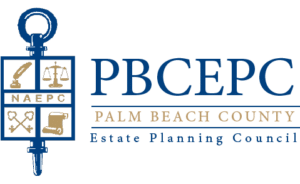
For those with long-term charitable intent, two platforms exist that can provide structure to your giving: Private foundations and donor-advised funds (DAFs). Careful consideration of the advantages and disadvantages of each is an important step towards ensuring that your charitable, family, and financial goals are adequately met.
Before taking on the evaluation process it is recommended that the individual or family take the time to evaluate their history of charitable activity and passions. Such introspective questions could include:
- Where and how do I want to make a difference in the world?
- How involved do I want to be in making a difference? How involved would my family like to be?
- Do I expect full control over every aspect of my giving journey?
Time, Expense and Administration
In these areas, private foundations and DAFs differ substantially. Often established with financial institutions or community foundations, DAFs are easy to open and manage which is one reason for their increasing popularity. Often referred to as “charitable piggy banks” DAFs can usually be established with an initial contribution of $5,000 to $25,000. Once funded, charitable grants can be made at the recommendation of the donor from the DAF to any IRS-approved 501(c)3. The financial institution or community foundation is responsible for tax filings, investment management and grant administration.
Private foundations exist in trust or corporate form and often require significantly more financial investment and effort to create and manage. As such, experienced legal, tax and investment guidance is advisable. Once established, private foundations grant funds to organizations typically through a defined selection and granting process. The grantee organizations are usually required to provide impact reporting back to the private foundation for review.
Private foundations must adhere to strict IRS rules related to expenditures, taxes, records management, granting, governance, and charitable contributions. Given this, many private foundations often employ staff to manage these responsibilities depending on the size of the foundation and the interests of the families.
Control and Distributions
While significantly easier to establish and manage, DAFs present potential limitations as they relate to the donor’s capacity to oversee the fund’s investments and grants as donors relinquish control over contributed assets to a DAF. While most financial and community foundations will rarely override a donor’s charitable choices and sometimes offer opportunities for the donor’s advisor to oversee investments, the donor does not have complete control.
Private foundations, however, exercise maximum control over grants and investment decisions.
In terms of charitable grants, DAF holders are not required to make a minimum distribution each year to a charity while private foundations are required to distribute a minimum of 5% each year, though any staff salaries would contribute to the minimum distribution requirement.
Tax Implications: Contributions and Deductions
IRS rules provide a slight advantage to DAFs as it relates to contributions. Contributing assets to a DAF results in a fair market value (FMV) deduction of up to 60 percent of adjusted gross income (AGI) for cash and 30 percent for contributions of stock or real property. With private foundations FMV is only considered for publicly traded stock, while contributions of other real property are valued at cost basis. Cash is deductible to 30 percent of AGI. Public and closely-held stock, as well as real property, is deductible to 20 percent of AGI.
Privacy
In cases where individuals or families seek discretion, DAFs offer a clear advantage as the sponsoring financial institutions or community foundations are not required to disclose donor information. Conversely, private foundations are required to disclose donor information via IRS Form 990, which is publicly accessible.
Family Considerations
Perhaps most importantly, private foundations and DAFs both have the capacity to support individuals and families in their efforts to establish or sustain value systems, albeit at slightly different depths. Since private foundations require more administration, governance, grantee selection, and impact measurement there are ample opportunities to provide learning experiences for heirs.
While DAFs offer fewer formal opportunities to include family, efforts can be made to ritualize giving decisions among family members and the fund can also be personalized with a family name. Funds can also be parsed out to individual family members to make granting decisions on behalf of the family.
Given all of the variables, it is critical for anyone considering a private foundation or a DAF to choose based on their current and future passions and capacities. With important financial, tax, legal, and familial implications, either choice should be made carefully in consultation with qualified advisors.
Greg Romagnoli, Chartered Advisor in Philanthropy (CAP®), serves as Sr. Director of Gift Planning with Nicklaus Children’s Hospital Foundation and works with individuals and families to create and facilitate gifts of current and deferred gifts of cash and non-cash assets. Greg is a proud member of the Estate Planning Council of Palm Beach and the National Association of Charitable Gift Planners.
